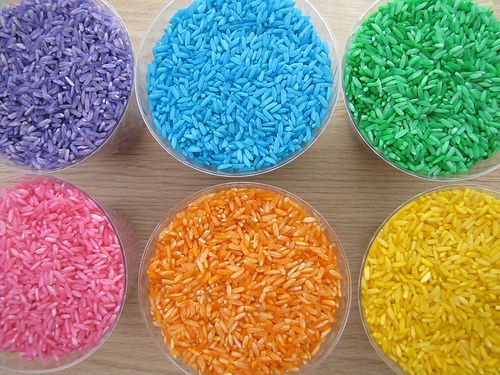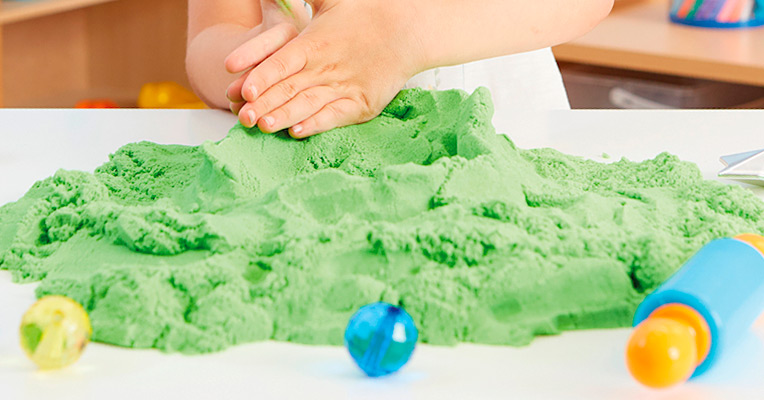Before we start looking at all of the sensory activities for toddlers you can use to play, let’s be honest. Sensory activities usually end up in a mess. There is no running away from that. They open the door for free play, lets your kids explore a material, and provides tons of fun for the whole family.
But that fun usually means that there will be mess around. And if you are not a fan of mess, you should try and take some preventive measures. But know this: messy play is extremely important for young children, as it gives them ways to develop and learn. Messy play allows your kids to be creative, and allows for early learning.
All of the sensory activities for toddlers help your kids to develop and improve their motor skills, concentration, and co-ordination. And even more importantly, they learn how to work collaboratively and cooperatively as they use their skills to solve problems and experiment with solutions. With that in mind, let’s take a look at a couple of sensory activities you can try.
Homemade rubbery
Your kids will enjoy moulding the rubbery in their hands. It is an addictive activity, and the texture of the material is delightful. Rubbery goop looks and feels like a basic play dough, but it is much more. You can pull the goop apart, roll it back together, squeeze it, squish it, and much more.
Primary colors squishy bag
This play will let your kids see how colors mix and form other colors. The best part about sensory play research is that you let your kids play and learn in the same time. Your kids will use their hands to blend and squish the different colored paints together, and then form a new color.
Color rice

Speaking of sensory play ideas for babies, you can employ some food as well. You can color rice. How do you do that? You will need a cup of dried rice, teaspoon food coloring, paper towels, container with a lid, and plate for drying the rice.
Start by adding food coloring to the container, and then pour in a cup of rice. Screw on the lid, and shake until the rice is completely covered. If needed, add a little more food coloring. Place the wet rice onto a paper towel and plate, and then use a spoon to spread the rice evenly. Let it dry out. Proceed with your next color.
You can make your rainbow rice and teach your kid about colors of the rainbow.
Colorful spaghetti worms
Kids are very visual when they are little. They might not recognize which color is what, but they notice there are different colors. And they love to play with their hands. This game combines those two factors. You need a bucket of spaghetti, which you’ve colored before.
Put rocks with numbers on them between the spaghetti, and let your kids search for the rocks. You can help them learn the numbers, colors, and much more while they are squeezing and squishing the spaghetti.
Squishy bags
I said most of the sensory activities for toddlers end up being messy activities for babies. This is one exception, where you can play mess-free. The squishy bag is perfect for practicing numbers, letters, drawing pictures, shapes, words, and much more. But above all that, it is a great sensory activity.
For one bag you will need 1 cup of flour, 6 tablespoons of water, food coloring, and a zip-lock lunch bag. Place flour into a bowl, add food coloring, add water, and mix until the ingredients are well blended.
Scoop the mixture into a plastic zip-lock bag, place it onto a flat surface, and gently push any excess air out. Press the clips of the bags and ensure there are no holes. At the end, place a sticky tape along the opening.
You can let your kid explore the squishy bag for a sensory experience. To take it a step further, use your soft paint brush to write name, letters, numbers, and shapes on the bag.
Digging for dinosaur fossils
When I was a kid, I loved dinosaurs. And yes, that was during the Jurassic Park era. But dinosaurs are always a popular idea.
The idea of this game is to search through sand and find dinosaur figurines, fossils, and whatever else you put. So, all you have to do is place sand in a bowl, add some figurines, and let your kid play.
Make sand foam

Perfect for sensory exploration, your kids will love running their hands and fingers through the fluffy mixture. Sand Foam is made of only two ingredients, sand and shaving cream. The amount of ingredients can be adjusted until you are happy with the consistency.
Add sand to the tray, and then gradually add shaving cream and combine using hands. Once you get the desired consistency, invite your kids to play.
Sorting shapes bin
This is another of the sensory activities that help your kids play, but also learn in the process. Your kids can learn about shapes, colors, and more, all while developing their fine motor skills.
Place different shapes buttons in a container with sand. Add different bins for every different button. Your kids goal is to place the same shaped buttons in the designated bin.
Digging for spaghetti worms
As you can see, spaghetti can be used for so many sensory play and brain development activities. This is a simple activity, but brings so much fun. Put spaghetti in dirt, and let your kids dig for it.
Your kids will enjoy catching the slippery and slimy spaghetti using tweezers and then putting them into a jar.
Bottle top and bubble coups
Your kids will love creating bubbles while they search for the bottle tops as they disappear among the foam. All you need for this activity is a large tub filled with water, 40 bottle tops, ladle, whisk plastic container, towel, and of course, shower gel.
You can make bubbles using the whisk, swishing the water around with your hands, and much more. In the same time, you can hide the bottle tops in the bubble and let your kids play and search for the tops.
Rainbow rice and bottle tops
We already learned how to color rice. Now, we take it a step further. Put rice in a container, and using bottle tops, you can invite your kids to an open-ended, and unstructured activity. See what they create while playing with the rice and bottle tops.
Water balloon bath fun

Sometimes, the best games are the simplest ones. For this one, you will need to fill the bath tub with water, and then add balloons filled with water. It can get messy in the bathroom, but who cares as long as you are having fun with your kids.
Soapy sensory foam
Whip up foam using dish soap and food processor. Let your kids explore the sensory foam. It is that simple. And it is a great sensory activity for kids of all ages.
Exploring baby food
Babies love to explore different shapes. You can give them leftovers from your or theirs food. Sit your baby in his high chair, and pour some food on the tray. Your baby will squish, smear, and smash the food. Yes, it will get messy. But their fingers will eventually find their way to the mouth and face. You can expect your baby to explore textures with his fingers and hands for 20 to 30 minutes.
Sponge art painting
If you are in the mood for painting, and your kids love to paint, this is the activity to try. Sponge art is one of the most versatile activities. You can make any shape, and it is a fun sensory activity. The end result is pretty nice as well, as you will get a nice piece of art.
Get a basic kitchen sponge, and cut any shape of it. You can also do shapes with multiple sponges in different sizes. Place a clean paper before your kid. Dip the sponge in color, and let your kids play. You can expect your kid to squish the sponge between his fingers and smash it onto the paper.
Hide and seek with jelly
Jelly is a great tool for a sensory activity. You will need packet jelly crystals, plastic containers, and large tray or container to put the jelly mess in. You can hide anything you like in the jelly, from plastic numbers, to toy animals.
When you prepare the jelly, put the toys, numbers, or anything like colored beads into the mix. You can disguise the items better by putting red items in the red jelly. Once you are done, let the squishing begin. Hiding numbers is a great way to introduce numbers to your kids.

